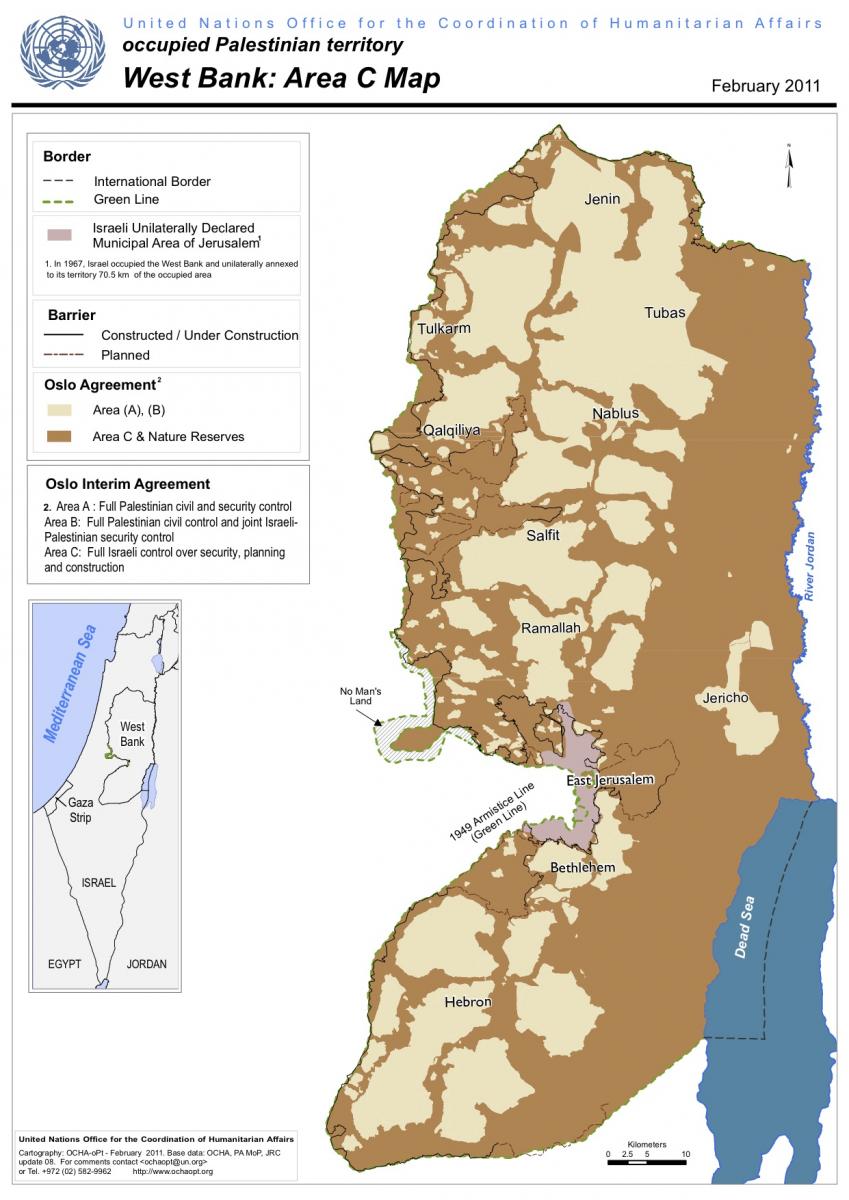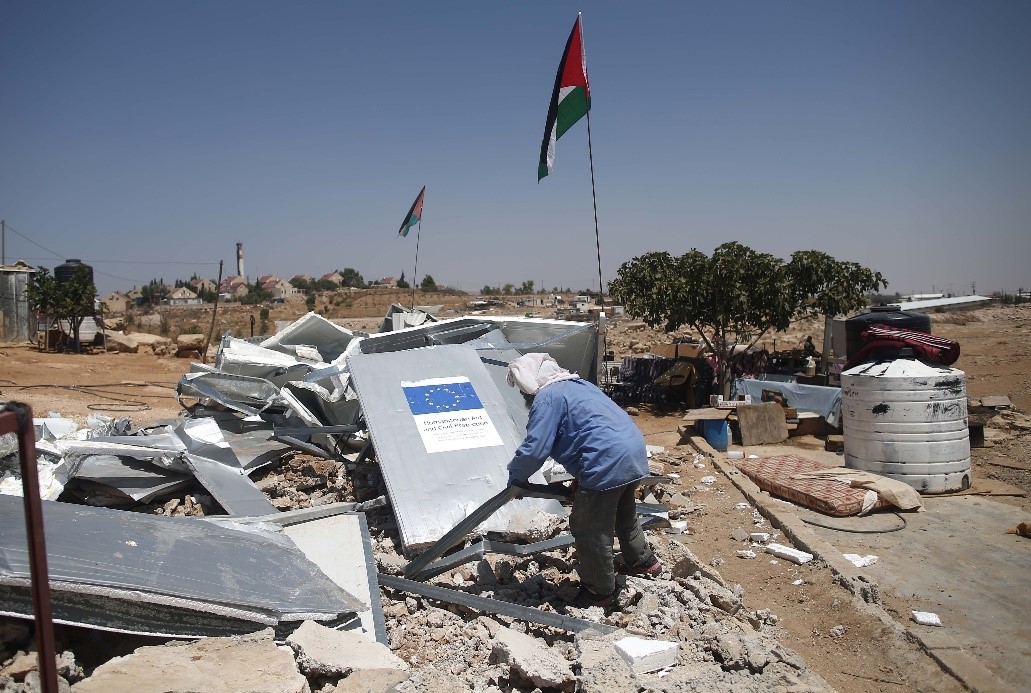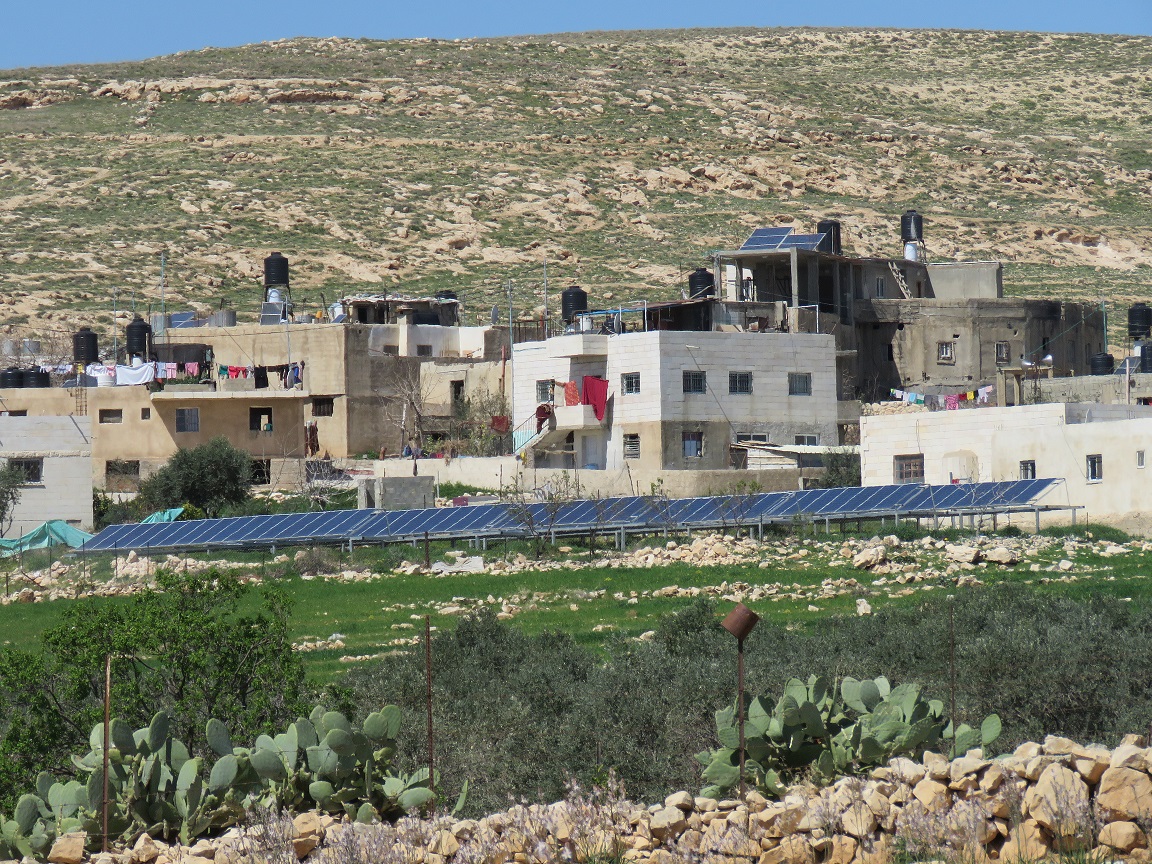The Challenge of Long-Term Development in the Occupied West Bank: Voices from the Field
The Challenge of Long-Term Development in the Occupied West Bank: Voices from the Field
Francesco Michele and Dario Rossi D’Ambrosio*
Far removed from the daily press briefings and reoccurring visits of foreign leaders, everyday life for the 530 Palestinian communities situated in Area C of the West Bank is getting harder by the day. Faced with a stringent planning and permit regime that constrains their socio-economic development, Palestinians live in an effective legal and political limbo, deprived of protection and access to basic services, which in turn impedes them to thrive on their land.
Covering over sixty percent of the occupied West Bank, Area C is of critical importance for the sustainability and territorial integrity of an independent Palestinian state. Donor funded international non-governmental organizations (NGOs) are working to increase the effectiveness of their interventions in the area, seeking to provide Palestinian communities with humanitarian relief and essential services in accordance with international law.
Yet, Palestinians’ who live in Area C often face a difficult choice: travel and work as a day-labourer in one of the nearby Israeli settlements, or simply pack up and leave, abandoning their community and livelihoods to move to Palestinian cities and built-up areas in Areas A and B of the West Bank.
One pertinent example of every-day life in Area C is provided by the small village of Jubbet ad-Dhib, located south of Bethlehem and in close vicinity to three Israeli settlements, an Israeli archaeological park and a military base. Established in 1929, the village is home to about 160 people whose plight is common to many such Palestinian communities in Area C. Residents are denied construction permits, suffer from a lack of access to basic services, including healthcare, clean water, sanitation and education facilities as well as severe electricity shortages.
Community members – seeking to comply with Israeli regulations – have in the past applied for a connection to the Israeli electricity grid, but to no avail. Residents remained dependent on generators given by international NGOs and on fuel availability, with only a few hours of electricity per day. More recently, an NGO provided the community with 96 solar panels complete with converters and batteries, providing 24 hours electricity. The project was funded by a European government and cost an estimated 350,000 euros to implement. Eight months later, on 28 June 2017, Israeli authorities dismantled the station and disconnected its converters and batteries, citing the lack of a building permit.[1] On 23 August, a donor-funded school serving the same village was also demolished by Israel.
The division of the occupied West Bank into Areas A, B and C emerged from the Oslo II Interim Agreement signed in 1995. The agreement handed the Palestinian Authority civil and security control over Area A (18 percent of the West Bank), Israeli security control and Palestinian civil administration over Area B (22 percent) and complete Israeli security and civil control in Area C.[2] The interim agreement was meant to be transitory, with Israeli control over Area C to be gradually phased out and passed to the PA over a five-year period.

Source: UN OCHA oPt, 2011.
The Oslo accords are deemed a seminal moment for the relationship between Israelis and Palestinians. Yet, the transitional frameworks they established are today entrenched, significantly hampering Palestinian access to basic services and long-term development. According to UN figures published in 2014, Area C is home to approximately 300,000 Palestinians and 356,000 Israeli settlers.[3] The latter are distributed across 135 settlements and 100 “outposts”, both of which are deemed illegal under international law, complete with bypass roads, military checkpoints and a vast network of closed military zones that cut across Palestinian built-up areas, preventing territorial contiguity.
Israel’s legal regime in Area C places Palestinians under the authority of the Israeli Civil Administration (ICA), a branch of the Israeli defence ministry, and its military courts, while Israeli residents are covered by Israel’s civil law and domestic courts. The ICA also supervises construction permits, placing significant limitations on urban planning and development in Area C. International NGOs and the UN have both described Israeli policies in Area C as creating a coercive environment conducive to forcible transfer.[4]
It is virtually impossible for Palestinians to obtain building permits in Area C (between 2010 and 2014 only 1.5 percent of applications were approved) and only 1 percent of the land is slated for Palestinian use.[5] Meanwhile, construction of housing units in Israeli settlements has skyrocketed. According to the settlements monitor group Peace Now, between April 2016 and March 2017, construction of 2,758 new housing units began, a stark increase compared to the 1,619 starts between April 2015 and March 2016.[6] 2016 also witnessed a doubling of demolitions and seizures of Palestinian structures in Area C and East Jerusalem compared to the previous year. The nearly 1,100 demolitions and seizures carried out in 2016 – 872 of which were in Area C – represent a new record since 2009. Thirty percent of these structures were donor-funded, with many of these funds originating from European institutions and member states.[7]

Umm Al-Khair, August 2016. Donor-funded structure
demolished by ICA. (Photo credit: Fadi Arouri)
The EU and its member states have cautiously begun to protest against such actions. As the largest donor to the Palestinians, the EU funds humanitarian and development projects in Area C, seeking to safeguard their interventions with small diplomatic actions, such as “protective field visits” to local communities or individual/joint statements condemning specific incidents of demolitions and confiscations.[8]
In over five years of working with international NGOs in Palestine, we learnt that while our objective is to find innovative and creative solutions to ensure Palestine’s and Palestinians’ “right to development”, the daily realities of military occupation are preventing us from reaching this objective. The current ineffectiveness of international humanitarian and development projects in Area C is directly correlated to the permit regime and a complex set of other Israeli norms and practices. This system makes it almost impossible to deliver meaningful and long-term development assistance, forcing NGOs to prioritize short-term emergency interventions such as the building of pre-fab schools and utilities, which then remain at risk of demolition, seizure or confiscation by the Israeli authorities.

Jubbet ad-Dhib, 2017. Solar panels donated by a European government.
(Photo credit: Comet-ME)
The EU’s decades-long development cooperation in Palestine helps donors tick the box of “support to the Palestinian people”, as exemplified by the plaques fixed around EU-funded structures in the occupied Palestinian territories (oPt), and no doubt does provide important respite to numerous individuals. Yet, these actions have progressively become “Band-Aid” interventions, and cannot provide for the sustainable development of Palestinians, both as individuals and as a collective.
There is an inherent discrepancy between the goals of humanitarian and development organizations and the political commitment of states to concretely support development in the oPt. While EU diplomats ponder whether to issue critical statements about Israeli demolitions, colleagues in Tel Aviv and back home in the capital promote deepened economic and political relations with Israel. This undermines the EU’s potential leverage, particularly pronounced when the Union speaks with one voice, and effectively results in a “wait and see” or “business as usual” approach.
Ultimately, what we have witnessed in Jubbet ad-Dhib and many other communities is that there cannot be significant development for Palestinians if the EU and its member states are not willing to deploy strong political cover to support such initiatives and protest against Israeli actions. If they intend to support the creation of a viable Palestinian state by delivering meaningful and long-term development assistance, they must muster the political will to confront Israel’s building permits regime and other norms and practices that assert Israel’s control over the oPt.
* Francesco Michele has twelve years’ experience in managing humanitarian and development operations in a variety of contexts. He has been working for more than five years in the occupied Palestinian territory with different humanitarian organizations and most recently with GVC-Italia.
Dario Rossi D’Ambrosio worked with human rights based organizations in Europe and has been working in the occupied Palestinian territory for more than two years with different human rights and humanitarian/development organizations. He currently works for GVC-Italia’s oPt office.
[1] Comet-ME, Confiscations in Jib a-Dhib, 28 June 2017, http://comet-me.org/1909-2.
[2] United Nations Office for the Coordination of Humanitarian Affairs - occupied Palestinian territory (UN OCHA oPt), West Bank: Area C Map, February 2011, https://www.ochaopt.org/node/5941.
[3] UN OCHA oPt, Under Threat. Demolition Orders in Area C of the West Bank, September 2015, p. 3, https://www.ochaopt.org/node/7657.
[4] UN OCHA oPt, UN’s Humanitarian Coordinator in Palestine warns of a heightened risk of forcible transfers of Bedouins in the West Bank, 22 August 2016, https://www.ochaopt.org/node/8882; Diakonia IHL Resource Centre, Removing Peace by Force, December 2015, https://www.diakonia.se/en/IHL/News-List/removing_peace.
[5] UN OCHA oPt, Under Threat. Demolition Orders in Area C of the West Bank, September 2015, p. 3, https://www.ochaopt.org/node/7657.
[6] Peace Now, Central Bureau of Statistics: 70% Rise in Construction of Settlements during The Past Year, Compared to Previous Year, 19 June 2017, http://peacenow.org.il/en/?p=28956.
[7] UN OCHA oPt, “Record number of demolitions and displacements in the West Bank during 2016”, in The Monthly Humanitarian Bulletin, January 2017, https://www.ochaopt.org/node/9058.
[8] European External Action Service (EEAS), Local Statement on Israeli Demolitions of Palestinian Structures in Area C, 22 February 2017, http://europa.eu/!uT66Vx.
-
Details
Roma, IAI, October 2017, 5 p. -
In:
-
Issue
17|17



